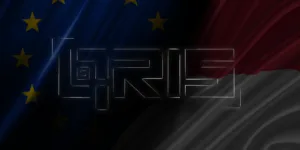As Asia’s geopolitical and economic influence continues to grow, Central Europe must face the reality that distant conflicts in the Indo-Pacific could have direct consequences on its security and prosperity. From Russia’s partnerships with China and North Korea to growing tensions in the South China Sea and Taiwan Strait, the implications for Europe are undeniable.
The re-election of Donald Trump injects fresh urgency into Central Europe’s approach to foreign policy.
With the global geopolitical centre shifting toward the Indo-Pacific, Central Europe cannot afford to overlook the risks and opportunities arising from this region. Tensions in the Indo-Pacific now have immediate implications for Central European economies, security structures, and alliances, as regional conflicts increasingly ripple across borders, impacting trade and stability worldwide.
For decades, Asia has emerged as a major hub of both economic growth and geopolitical power. A dramatic shift in global influence has seen the centre of gravity move from the Euro-Atlantic to the Indo-Pacific region, largely due to China’s meteoric rise as a global manufacturing hub and primary trade partner.
This change has made the Indo-Pacific a strategic priority for many European countries, including those in Central and Eastern Europe, which have benefited significantly from trade and investment with nations like Japan, South Korea and Taiwan. Even China itself has played an economic role in the region, although the nature and long-term effects of Chinese investments remain a subject of debate.
However, Central European governments have often lagged in recognising the full geopolitical stakes of these connections. While economic ties have grown strong, awareness of the security dimensions of Asia-Europe relations has been slower to develop. Few Central European policymakers grasp the extent to which crises in the Indo-Pacific – whether involving China, North Korea, or tensions in maritime regions like the South China Sea – could ripple into Europe, affecting the region’s own stability and security. This inattention poses risks to the resilience of Central European economies, which rely on a stable global order and trade continuity.
To adapt to this shifting landscape, Central Europe must make the Indo-Pacific an explicit part of its strategic focus. Proactive engagement with Indo-Pacific issues can bolster the region’s resilience and readiness in a world where localised conflicts rarely remain contained. Central European states should respond by formulating robust policies aimed at securing partnerships, reinforcing defence capabilities, and expanding trade with like-minded Indo-Pacific nations.
This article outlines the specific policy actions Central Europe must take to address these Indo-Pacific security issues with clarity and urgency. These include:
-
National Indo-Pacific Strategies: Developing an Indo-Pacific strategy ensures coordinated foreign policy that enhances regional resilience.
-
Partnership with Indo-Pacific Nations: Deeper partnerships with like-minded nations protect against China’s assertive tactics.
-
Defence Cooperation for Ukraine Support: South Korean cooperation can aid Ukraine and reinforce European defence.
-
Maritime Security Engagement: Symbolic participation in maritime operations can show European commitment to securing trade routes.
-
Taiwan Support: Standing with Taiwan would signal strong European opposition to Chinese aggression.
Starting with a snapshot of NATO’s evolving Indo-Pacific posture, the following sections examine five critical areas Central Europe should monitor closely for potential impacts on stability and prosperity.
NATO’s Indo-Pacific Shift
NATO’s increasing focus on the Indo-Pacific region signals a decisive shift in its strategic priorities, one that Central European countries must take seriously. The alliance’s 2022 Strategic Concept marked a clear recognition of the Indo-Pacific’s impact on Euro-Atlantic security, acknowledging the direct link between local proxies in the region and its stability. For the first time, NATO highlighted threats that could arise from Indo-Pacific tensions, identifying China’s ‘malicious hybrid and cyber operations’ and ‘confrontational rhetoric and disinformation’ – often disseminated via partnerships with local proxies – as critical concerns. This language represents a major step for NATO, positioning the Indo-Pacific as a strategic frontier.
This pivot was underscored by NATO’s inclusion of key Indo-Pacific partners – Japan, South Korea, Australia, and New Zealand – at the 2022 summit and subsequently in 2023. Leaders from these nations attended NATO meetings to discuss shared security concerns and to strengthen the alliance’s approach to countering common threats. China, obviously, is not happy with this development and pursues policies aimed at diminishing the impact of NATO’s Indo-Pacific shift. Beijing perceives this as part of a broader strategy to contain China’s regional influence and has been actively working to limit the effectiveness of NATO’s presence in Asia.
Central Europe cannot afford to ignore this geopolitical recalibration. Conventional wisdom often suggests that Indo-Pacific security risks are geographically distant, with limited impact on Central Europe. Yet, this view is increasingly out of date – and dangerously so. Russia’s full-scale invasion of Ukraine has demonstrated that regional conflicts with global implications can quickly engulf Europe, with the Indo-Pacific now presenting a similar potential threat. The intertwining of Euro-Atlantic and Indo-Pacific security concerns is no longer hypothetical; it is a current reality, particularly as China and Russia coordinate their geopolitical strategies.
For Central Europe, this NATO shift underscores the need for regional governments to adapt their security frameworks. The countries of Central and Eastern Europe (CEE) are geographically situated at a strategic crossroads, with security vulnerabilities that may be exploited by actors like China and Russia as they test NATO’s resolve. By engaging more deeply in NATO’s Indo-Pacific priorities, Central European nations can not only reinforce NATO’s expanded strategic vision but also enhance their own security and economic resilience in the face of potential Indo-Pacific crises.
1. China-Russia partnership
China is increasingly posturing as a global superpower, positioning itself as a European security player in ways that can undermine Europe’s own stability. Just days before Russia’s full-scale invasion of Ukraine, Putin and Xi elevated their countries’ ties to a ‘no limit partnership.’ China has since supported Russia with energy purchases, dual-use goods sales (including much-needed semiconductors), intelligence sharing and diplomatic backing in international fora, especially the UN.
This partnership underpins an authoritarian alliance including Iran and North Korea, often called the ‘CRINK,’ that aims to reshape global norms and system of governance.
The 2023 meeting between Xi Jinping and Vladimir Putin in Moscow is illustrative of this. Xi ended the meeting by proclaiming: ‘Right now there are changes – the likes of which we haven’t seen for 100 years – and we are the ones driving these changes together.’ Putin affirmed.
China’s 12-point position paper on the ‘political settlement of the Ukrainian crisis,’ its own ‘peace plan’ which is widely criticised as Russia-leaning, reflects Beijing’s ambition to influence European security.
CEE countries are divided on China’s intentions. While the Baltic countries, Czechia and Poland see China’s support for Russia as a threat, others, like Slovakia under Robert Fico or Orbán’s Hungary, have shown openness to China’s overtures.
2. China-Belarus military exercises near NATO border
In July 2024, Chinese and Belarusian troops held 11 days of joint exercises in Brest, just a few kilometres off Polish/NATO borders. This exercise, framed as anti-terrorism training, sent a clear signal of China’s willingness to assert itself in Europe, with Belarussian officers publicly stating that they are responding to the West’s ‘aggressive foreign policy.’
Reinforcing this intended message, the training started on the eve of NATO’s 75th-anniversary summit in Washington, during which officials expressed ‘profound concern’ over ‘deepening strategic partnership between Russia and the PRC and their mutually reinforcing attempts to undercut and reshape the rules-based international order.’
Backed by Belarus’s recent integration into the China-led Shanghai Cooperation Organisation (SCO), an entity that aims to strengthen economic, political, and security cooperation between China, Russia and other Eurasian nations, this partnership demonstrates that Belarus’s international ties extend beyond Russia, reinforcing both countries’ defiance of perceived Western dominance.
3. North Korean soldiers in Ukraine
South Korean intelligence reports indicate that North Korea has deployed approximately 1,500 troops to assist Russian forces in Ukraine. It is believed that this is just the first wave of troops, and the final number could rise up to 10,000 soldiers.
This is just the latest development in a deepening Russia-North Korea alliance, which has been rapidly developing since Russia invaded Ukraine, to the mutual benefit of both countries.
North Korea has been steadily supplying Russia with artillery projectiles, reportedly delivering over three million shells between September 2023 and February 2024, and Moscow has provided Pyongyang with food and other products in short supply. Russia has also dismantled the sanctions regime against North Korea, which has been for decades a point on which Russia managed to find common ground with the West. It stopped complying with existing sanctions, called for adopting a sunset clause, and even vetoed a UN resolution in March 2024 to renew the mandate of the UN Panel of Experts, a body that plays a vital role in sanctions enforcement.
Pyongyang has also reaped diplomatic benefits from the partnership with Russia. In June 2024, Vladimir Putin visited North Korea for the first time since his last visit 24 years earlier, in 2000. This indicates how much weight Putin now gives to ties with North Korea.
Meanwhile, North Korea has been ratcheting up tensions on the Korean peninsula. In November 2023, Kim Jong-un suspended the 2018 Panmunjom declaration, which had laid the groundwork for a peace treaty to formally end the 1950s Korean War. In more recent news, Kim also ordered the demolition of roads and railways crossing to South Korea. Reports of trench digging along the border have raised alarm. Erosion of the sanctions regime will only embolden Pyongyang to adopt more provocative actions towards South Korea.
South Korea, a key NATO partner in the Indo-Pacific, plays an increasingly important role in supplying military equipment to European countries, especially Poland. Over the past four years, it even emerged as the second most important supplier of weapons to the EU and European NATO members. Should the security situation on the Korean Peninsula deteriorate, South Korea may shift its focus inward, which would negatively impact Central Europe’s preparedness.
4. South China Sea shipping disruptions
Local developments in the Indo-Pacific region also have profound impacts on Europe. One of the most volatile hotspots is the South China Sea (SCS), where China’s territorial and maritime claims remain contentious in spite of the UN Convention on the Law of the Sea (UNCLOS) (to which China is a party) and the 2016 ruling of the Permanent Court of Arbitration. China’s continued militarisation of the area and occasional flare-ups of violence are heightening the risk of a territorial conflict turning military, with serious consequences for global trade.
A conflict in the region would gravely disrupt global commerce, as over a third of the world’s maritime trade relies on SCS shipping lanes. While alternative transport routes exist, they are slower and significantly more expensive. In the worst-case scenario, rerouting ships around Australia could add over $90mil to daily shipping prices (as of 2016).
Though maritime security typically falls under the domain of coastal states, inland countries would be also affected. Five to 6% of V4 countries’ international trade depends on South China Sea shipping routes. This percentage has likely increased since 2016. As such, even CEE countries have a vested interest in maintaining peace in the region, a fact that is scarcely recognised.
5. Taiwan Strait and potential crisis for the global economy
While a military contingency in the South China Sea would significantly raise global shipping costs, a conflict in the Taiwan Strait would have far graver consequences. Like the South China Sea, the Taiwan Strait is a vital shipping route. Since at least 2018, China has disputed the status of the waterway as international waters, increasing risks to free navigation, especially as Chinese naval military posturing has increased in the region.
China has grown increasingly assertive, with its naval and air forces increasingly crossing the median line that separates China and Taiwan. The situation peaked in 2024, following the election of Taiwan’s new president, Lai Ching-te. During the Joint Sword exercise (in May and October 2024), China simulated a blockade of Taiwan and its amphibious assault, with operations taking place closer to Taiwan than ever before, within its contiguous zone (between 12 and 24 nautical miles off its coast). This ‘anaconda strategy’ is escalating pressure on Taiwanese defences.
What sets a potential conflict in the Taiwan Strait apart from one in the South China Sea is the far-reaching impact it would have on global industries. For instance, Taiwan is a global leader in semiconductor production, responsible for 60% of all chips, including 90% of the most advanced semiconductors. A blockade or military action against Taiwan would cut the world off from these vital supplies. 35% of the semiconductors used in the automotive industry are produced by the Taiwanese company TSMC alone. These semiconductors are essential to the economies of Central Europe that depend on the production of automobiles, which are already under tremendous pressure from competition from China’s subsidised EV production.
A prolonged conflict in Taiwan could cost the global economy up to $10 trillion – about 10% of global GDP. The economic disruption would be particularly severe in sectors dependent on Taiwan’s semiconductor output, such as AI, quantum computing, consumer electronics and automotive industries. This could spark a global recession.
Central Europe needs to act
These five situations exemplify how closely Central Europe’s economy and security are linked to developments in the Indo-Pacific.
As the geopolitical landscape continues to shift eastward, Central Europe cannot afford to overlook the impact of Indo-Pacific tensions. Engaging proactively with these challenges will help bolster Central Europe’s resilience in a world where regional conflicts are rarely contained within their borders.
To improve their resilience, Central European states should focus on five courses of action:
- Central European states should include the Indo-Pacific region in their national foreign policy strategies, perhaps in the form of a separate Indo-Pacific strategy. Czechia and Lithuania already adopted such strategies (in 2022 and 2023, respectively), while Slovakia started the process of preparing one in 2021. These national strategies should be formed in dialogue with those of the EU and NATO to ensure alignment and maximise the efficacy of joint actions.
- National policies should focus on forging deeper partnerships with like-minded states – such as Japan, South Korea, Australia and Taiwan – as well as countries like Vietnam that share Europe’s interest in dampening the negative effects of China’s assertive posturing.
- CEE states should also deepen cooperation with Indo-Pacific partners, particularly South Korea, to support Ukraine’s defence efforts. CEE countries can act as intermediaries to facilitate the supply of arms to Ukraine from Asian countries that may be reluctant to do so directly due to domestic or international constraints.
- Inland CEE countries should engage Indo-Pacific partners on maritime security and governance issues, both in general and in the specific contexts of the South China Sea and Taiwan Strait. This engagement could include symbolic participation in freedom-of-navigation operations conducted by European naval powers (e.g. France, Germany) to demonstrate EU-wide commitment to uphold freedom of navigation and security of sea lanes.
- Central European leaders should continue to voice their support for Taiwan in international fora and pursue substantive cooperation. In many respects, Central European countries have the potential to lead the EU in this area. Such leadership would contribute to the deterrence of Chinese aggression and foster long-term, mutually beneficial economic cooperation.
Failure to take these steps would jeopardise Central Europe’s economy and security.
The article was originally published by Visegrad Insight.







